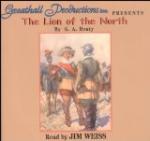were steady this depth of formation should be able
to sustain any assault upon it, and that with a greater
depth the men behind were useless in the fight.
His cavalry fought only three deep. The recruits
acquired the new tactics with little difficulty.
In Scotland for generations every man and boy had received
a certain military training, and all were instructed
in the use of the pike; consequently, at the end of
a week Colonel Munro pronounced Nigel Graheme’s
company capable of taking their place in the regiment
without discredit, and so went forward to see to the
training of the companies of Hamilton, Balfour, and
Scott, having arranged with Graheme to march his company
to Dunbar in three weeks’ time, when he would
be joined by the other three companies. Malcolm
was delighted with the stir and bustle of his new
life. Accustomed to hard exercise, to climbing
and swimming, he was a strong and well grown lad,
and was in appearance fully a year beyond his age.
He felt but little fatigued by the incessant drill
in which the days were passed, though he was glad
enough of an evening to lay aside his armour, of which
the officers wore in those days considerably more
than the soldiers, the mounted officers being still
clad in full armour, while those on foot wore back
and arm pieces, and often leg pieces, in addition
to the helmet and breastplate. They were armed
with swords and pistols, and carried besides what were
called half pikes, or pikes some 7 feet long.
They wore feathers in their helmets, and the armour
was of fine quality, and often richly damascened,
or inlaid with gold.
Very proud did Malcolm feel as on the appointed day
he marched with the company from Nithsdale, with the
sun glittering on their arms and a drummer beating
the march at their head. They arrived in due
course at Dunbar, and were in a few hours joined by
the other three companies under Munro himself.
The regiment which was now commanded by Lieutenant
Colonel Munro had been raised in 1626 by Sir Donald
Mackay of Farre and Strathnaver, 1500 strong, for the
service of the King of Denmark. Munro was his
cousin, and when Sir Donald went home shortly before,
he succeeded to the command of the regiment.
They embarked at once on board a ship which Munro
had chartered, and were landed in Denmark and marched
to Flensberg, where the rest of the regiment was lying.
A fortnight was spent in severe drill, and then orders
were received from Oxenstiern, the chancellor of Sweden,
to embark the regiment on board two Swedish vessels,
the Lillynichol and the Hound. On board the former
were the companies of Captains Robert Munro, Hector
Munro, Bullion, Nigel Graheme, and Hamilton. Colonel
Munro sailed in this ship, while Major Sennot commanded
the wing of the regiment on board the Hound.
The baggage horses and ammunition were in a smaller
vessel.




